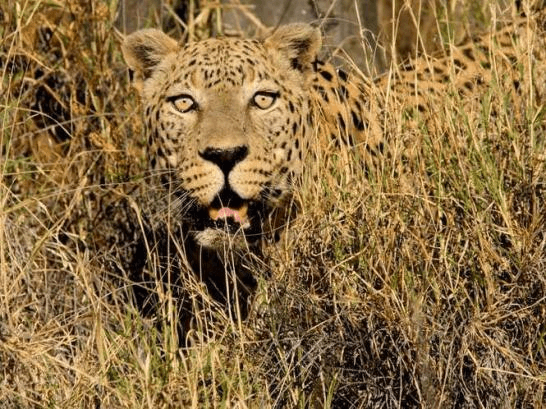Camouflage
Word meaning:- The word camouflage refers to the costume worn to disguise original personality. It means to hide with a cover that disguises others. It is a defense mechanism used by animals to blend in with their surrounding. Animals use camouflage to mask their identity, location, and movement. It is also known as cryptic coloration (a tactic an organism uses to blend with its surroundings). The most common tactic is matching with the background. Camouflage advantage two things: a) allow prey to avoid predators b) predators can sneak up on prey. Not only in animals either humans use camouflage, especially in the military. Soldiers are trained to hide in the condition of war like in forests soldiers hide with leaves and branches and with green clothes and color on the face. Examples of camouflage animals are:- frog, owl, spider, zebra, polar bear, stick insect, toads, and many more. Camouflage depends on several factors:-
Animals with fur develop different sorts of camouflage than animals with scale bodies. Animals on mountains and deep underwater depict different camouflage.
Some animals have inbuilt camouflage inbuilt in their behavior. For example:- animals like deer, hedgehogs, squirrels, lions have a brownish "earth tone" related to the brown color of land, trees, and soil at the ground level. Sea animals like dolphins, sharks, and other creatures have grey and blue-colored bodies that help them blend with the soft light underwater.
Camouflage depends on the behavior and characteristics of predators. Some animals that cannot use camouflage are easy to detect, and some predators are color blind; therefore, camouflage is of no use for them.
It is the most important factor that decides what camouflage looks like. It is the simplest technique of camouflage where animals match themselves the same as the surroundings. The environment is the model for camouflage. Animals produce different colors in two ways:-Biochromes are natural pigments in an animal body that chemically produce colors and are seen microscopically. These chemical colors absorb some colors of light and reflect others. The reflected pigment color combines all the visible wavelengths of light. Microscopic physical structure - Colours in animals are produced by microscopic physical structure. Here certain colors of combination are reflected in animals as they act like a prism that refracts and scatter visible light. For example:- polar bear hair appears white, but they are originally black due to translucent hair property. With this property, hair bends slightly when light shines on the hair. When light falls on them, it bounces back around some of the surfaces of the body, and the rest of the light reflects out, producing white coloration. For example:- some animals like amphibians, reptiles, and fish have a layer of skin with yellow pigment that reflects green color, and it also scatters light to reflect blue color. In animals, chemical and physical colorations are determined genetically (genes pass form parent to offspring). Camouflage develops in species through the process of natural selection. Wild animals live longer as they closely match their surroundings overlooked by predators and produce offspring that also survive. In animals, the means of coloration depends on an animal's physiology.
Types of CamouflageThere are four types of camouflage in animals. a) Concealing colorationProper structure of the outer covering evolves to create better camouflage like in squirrels; the fur is rough and uneven, which resembles the texture of tree bark. In some cases, the smooth texture of leaves is replicated by the shell of a few insects. Camouflage coloration effects during the changing of seasons as animals surrounding changes at this season.
b) Disruptive colorationApart from background color matching, some animals have distinctive body designs conceal them. Some species of animals have spots, stripes, and groups of patches that can help them in a couple of ways. This coloration is effective when animals (particular species) are grouped. But this camouflage doesn't hide an animal presence (it misrepresent the animal). An example of an impressionist is a walking stick (an insect that looks like an ordinary twig). A predator easily distinguishes it in its surroundings but ignores it by thinking it's just a stick. c) Disguise CamouflageThe general and ordinary camouflage changes the organism's appearance and color that helps him blend with the surroundings via color, texture, and shape. Examples of camouflage are found in insects like stick bugs, leaf butterflies, dragonfly katydid, spiders, etc. 
d) Mimicry CamouflageVarious animals copycat or mimic sound, appearance, behavior, or odor. It is mimicry done by animals to fool or escape from their predators. For example- the viceroy butterfly mimics monarch butterfly (because it is poisonous); therefore, birds never act as predators for them.
Next TopicSexual Reproduction in Humans
|
 For Videos Join Our Youtube Channel: Join Now
For Videos Join Our Youtube Channel: Join Now
Feedback
- Send your Feedback to [email protected]
Help Others, Please Share









